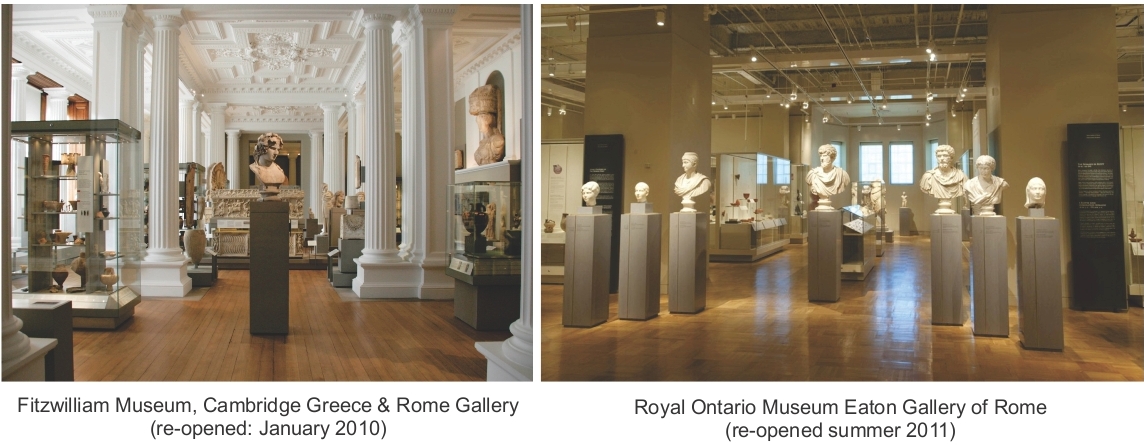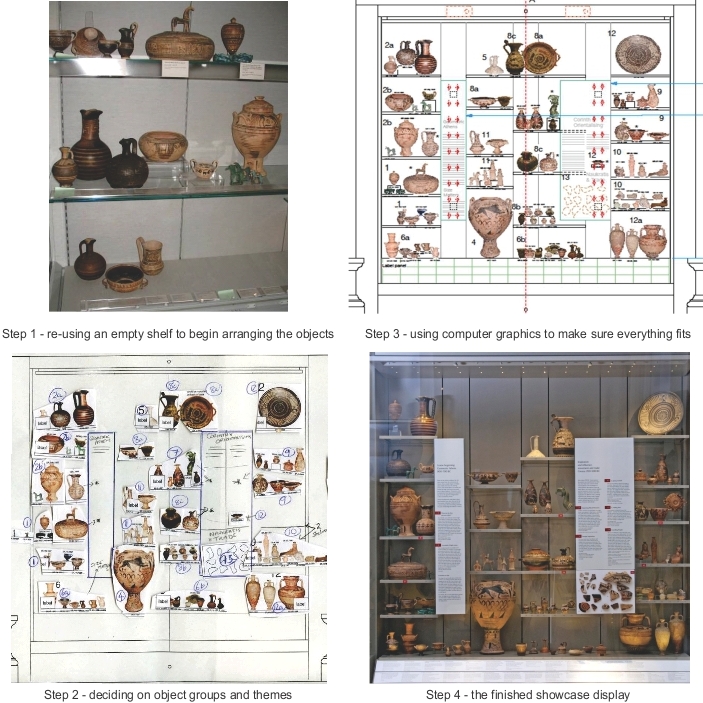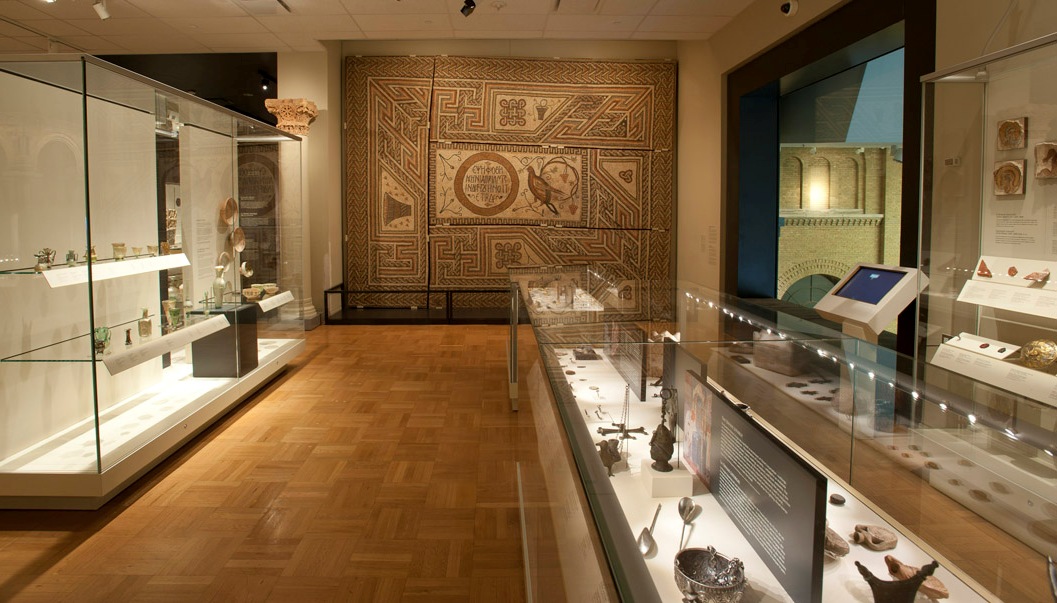How to display the past.....Part 3: Curatorial Perspectives
As I mentioned in my first post, this behind-the-scenes tour is based on a course for University of Toronto graduates that I have been teaching this semester (my sorry excuse for the long delay between blog posts). In the class the students heard two different experiences of putting together a permanent gallery display – my own with Greek and Roman gallery at the Fitzwilliam Museum, Cambridge, which opened in January 2010, and that of ROM curator Paul Denis in refurbishing the Roman and Byzantine Galleries at the ROM which opened in summer 2011. It became clear from these two perspectives that although each museum works differently, there are some things that never change.

Any gallery display involves a huge team of people: curators, conservators and technicians, who are focused on the ancient objects; designers and interpretative planners, who are thinking about the look of the space; manufacturers of showcases, plinths and lighting engineers, who put the plans into practice. The small scale of the Fitzwilliam Museum meant that only the curators, conservators and technicians were on the museum staff and other people were outside contractors employed for the project, but the ROM staff is large enough to have most positions ‘in-house’ with only the manufacturers of the plinths and showcases contracted externally.
Every member of the project team has a different responsibility, but here are some key steps in creating a gallery from a curatorial point of view:
- Deciding which objects to include and the stories they will tell. The stories chosen (in our case stories about the ancient world) will depend on the strengths and weaknesses of the museum collection. For instance, in the Byzantine gallery at the ROM a thematic, rather than a chronological, approach was decided on because the collection does not include artefacts from the whole time period (c. AD 330-1453), but is focused on the earliest period.
- Arranging the objects. Many of the narratives in the gallery display will be conveyed as much by the physical grouping of the objects as by the information provided. This is probably most obvious when objects are displayed in a chronological arrangement. To get an idea what this will look like in the final display it is essential to mock it up.There are different ways of approaching this – from actually laying out the objects on a surface of the correct dimensions, to using computer graphics. Curators always want to put in more objects than designers are happy with!
- Writing the information. Again, there’s never enough room for all the information curators would like to include. In the gallery there needs to be some standard information about each object that will be of interest to a wide range of audiences, from beginners to experts. Dividing the text into small sections that fit into a hierarchy of information is also important. The ROM uses large freestanding panels for introductory overviews of the region or period, smaller introductions to particular groups of objects and themes, and individual object labels.

'Mocking-up' the arrangement for a showcase in the Fitzwilliam Museum gallery
There are also more general issues that everyone working on a display needs to engage with:
- Accurate Specifications. Everything in a gallery, from the showcases to the individual mounts for each object will be custom-made. This is about more than just the appearance of the gallery. Making sure that every element of the gallery ‘works’ – both in caring for the ancient objects themselves, which often have different conservation needs, and in looking after the ‘needs’ of the museum visitor, and the museum itself – means that a huge variety of people check on every detail.
- Structural issues of the gallery space can affect the design and narratives of the display. In the ROM’s Byzantium Gallery, only one wall was strong enough to hold the heavy Byzantine floor mosaic (97.154.1.1-4), and the design of the whole Byzantine display had to take this into account.
- Last but not least, the ‘shelf life’ of a gallery. In most museums a permanent display will be expected to last 20 to 30 years before it is re-designed. It is impossible to predict changes in fashion over several decades, so every display will look ‘dated’ after a while, but there needs to be some allowance made for small changes in the display. Years from now, a new acquisition or revised scholarly opinion may need to be incorporated without starting the whole gallery design again. In the gallery at the Fitzwilliam Museum a small showcase for changing temporary displays of particularly interesting objects or research was one way to keep the whole gallery looking fresh.

The huge mosaic in the Tanenbaum Gallery of Byzantium at the Royal Ontario Museum
